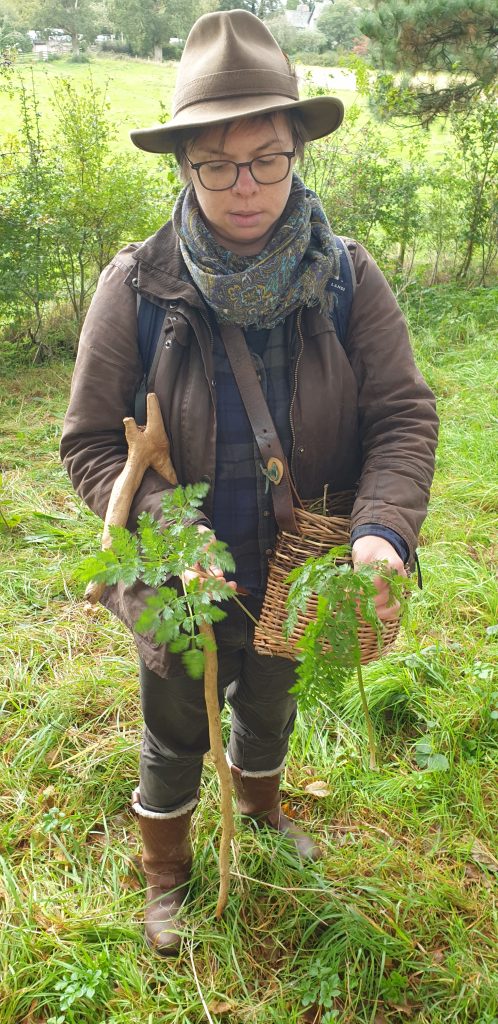
Adventure group go foraging

In October the u3a Adventure Group went on a guided foraging walk. Ten of us assembled for this at the Dartington Estate to learn from expert forager Myrtle. Most of us admitted to having foraged in the past but only for blackberries and sloes. We were keen to find out what else might be available to us.
The first thing we were shown was a hawthorn hedge covered in berries. We tried them and found that, although they are nutritious, they are not particularly delicious and, as they are quite small and the large pip in the middle needs to be avoided, they did not really seem worth the effort. Myrtle, however, had made fruit leathers. These homemade strips of dried fruit puree included a range of hedgerow fruit and made a very tasty snack. They also contained rose hips which we would look at later in the walk. These are an excellent source of vitamin C and many of us remembered being given rosehip syrup as children.
Next we looked at the dock plant. The younger leaves and stalks of the dock can be eaten but we concentrated on considering the seeds which are abundant at this time of year. These can be ground and used to make a gluten free flour.
Growing alongside the docks were plenty of nettles which we were told is one of the most nutritious plants growing in this country, being rich in protein, fibre and vitamins. The leaves should be picked from young plants as once they begin to flower they contain a chemical which can damage the kidneys. It is well known that the nettles can be infused to make a tea, but the leaves and stalks can also be eaten so long as they are cooked to inactivate the sting.
After this we looked at the yarrow plant which is a particularly good medicinal herb. It is anti-inflammatory and anti-microbial. It can be used to treat wounds because it helps blood to clot. It can also be eaten and may help to cure colds and headaches.
We now enjoyed a further snack which consisted of small crackers made with dock flour and a dip made with butter beans, nettles and yarrow. Whilst the crackers were a bit ‘wooden’, the dip was very tasty.
Next we were lucky to spot a rare cauliflower fungus. Our specimen was a little old and past its best but Myrtle told us that if it had been younger, she would have taken some of it home to pan-fry. It had a slightly rubbery texture and had numerous folds which were full of dirt so it would need to be cleaned very thoroughly. We also found an artists bracket fungus on an old tree stump. It is not really edible although it is used in Chinese medicine. Another fungus we found was honey fungus. We were told that these clusters of large mushrooms are edible but should never be eaten raw. We were cautioned about the importance of not eating mushrooms, or indeed anything else, unless we were certain of its identification. Honey fungus has poisonous lookalikes.
Myrtle then showed us an example of a poisonous lookalike. She picked some wild hemlock. This plant is in the carrot family but all parts of it are extremely poisonous. She showed us how similar it looks to cow parsley. Cow parsley is edible but I certainly wouldn’t take the risk of trying it, just in case I had misidentified the plant.
Finally we looked at the alexanders plant. This was apparently once cultivated as an edible plant but has fallen out of use. Young shoots and leaves can be cooked or eaten raw in salad and have a flavour a bit like celery and the seeds are peppery.
It was a most interesting walk and I learned some new things but in all honestly I am not sure that I will be cooking up any of the things we were shown. However, I would like to thank Miggie for organising it and Myrtle for sharing her knowledge.
Deborah
This post has been adapted from Deborah’s own blog (What Deb Did Next) in which she writes about her many new experiences. You can read more here: https://debs60things.wordpress.com/2023/11/02/episode-eighty-eight-foraging/
